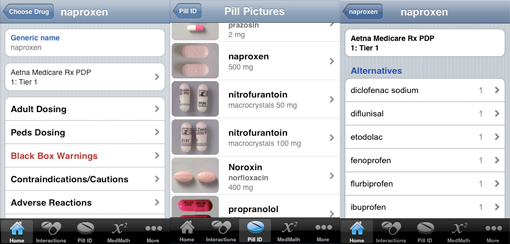Group of Carriers To Unite Against App Store

It was announced today at the Mobile World Congress, that two dozen of the world’s largest mobile-phone carriers, including the likes of Verizon Wireless, AT&T, NTT DoCoMo, Deutsche Telekom, China Mobile and Vodafone are combining forces to create an "open international applications platform," according to MoCoNews. More than likely this is in response to the success of Apple’s App Store.
In addition to the carriers, the GSMA and three device manufacturers, including LG, Samsung and Sony Ericsson are also giving the "thumbs-up" to the effort. After doing the math, the group reaches 3 billion subscribers worldwide, which would make it the largest effort ever for an app platform such as this. But the task will be difficult, mainly due to the massive scope and barriers that would be undertaken in bringing together so many platforms and operators.
The initiative is being deemed the "Wholesale Applications Community," aiming to create a wholesale platform for mobile apps that can provide a single point-of-entry for devs. The group wants to use common open standards that will give developers the opportunity to create apps across multiple platforms. The standards would include JIL, which Verizon, Vodafone and China Mobile have been in the process of working on, and OMTP BONDI. Those standards are expected to gel into a common standard within the next year. They will work with the WC3 standards bodies to create one solution for developers to create apps and port them across mobile device platforms and operators.
For more information on the initiative, you can head here.
Enterprises ditch Microsoft’s IE6, go big for IE8
Contrary to popular thought, enterprises are not wedded to Microsoft’s old and buggy Internet Explorer 6 (IE6), but have largely dumped the browser.
IE6 is running on only 8.3% of the PCs powered by Windows XP that Devil Mountain Software’s community-based Exo.performance.network (XPnet) tracks, said Craig Barth, the company’s chief technology officer. In comparison, 19.4% of the XP machines are running IE7, while an amazing 72.2% run IE8, Microsoft ’s newest browser.
"I’m shocked," said Barth today. "IE6 is just a single-digit browser on XP in the enterprise ."
Devil Mountain sniffs out system information, including installed applications, from the 23,000 PCs that run the XPnet agent, a small program that regularly "phones home" with the machine owner’s permission. Devil Mountain recently reconfigured the XPnet agent so that it could determine the version of IE installed on the PC.
On those computers running Windows Vista, 12.8% have IE7, the browser that shipped with the operating system in 2007, but 86.5% have IE8, which Microsoft launched in March 2009.
"IE8 has been a much larger hit than most of us thought," admitted Barth, referring to the long-held idea that while consumers may have obliged Microsoft by upgrading to IE8, relatively few enterprises have.
"IT shops are clearly getting a bad rap for being behind the curve," Barth said. "These are smart people. They know that IE6 is kryptonite. And they’re mostly off of IE6 now."
The perception that IE6 usage remains strong, especially in the enterprise, has come from metrics vendors such as NetApplications.com, as well as Microsoft itself, Barth argued. "Measurements of the Web as a whole are just not painting an accurate picture of what is in the enterprise," said Barth. "They can’t."
According to NetApplications’ most recent data, IE6 accounts for 20.1% of all browsers in use, while IE7 and IE8 hold down 14.6% and 25.1% shares, respectively. Much of the measured IE6 usage, however, apparently originates in China, where the nearly-nine-year-old program represents 50% of browsers in use. In the U.S., NetApplications has said, IE6 share is less than 10%, a number that is similar to XPnet’s.
Apple TV Software Update Available, Aluminium Keyboard Firmware

Apple released a software update for the Apple TV but has yet to reveal any details of the update. Apple TV 3.0.2 is said by users who have updated to make no noticeable changes.
Until Apple releases a related support article smart speculation suggests that the update simply brings compatibility with Aperture 3 which was released.
Apple TV 3.0 was released in October last year bringing major UI changes and iTunes LP playback capabilities.
This firmware update improves battery performance of the 2009 Aluminum Apple Wireless Keyboard when used in combination with other Bluetooth devices (example. Magic Mouse, Bluetooth headsets).
Apple releases iPhone OS 3.2 SDK for iPad
Apple has officially released the new software development kit for iPhone OS 3.2, which enables third party developers to begin creating new apps that take advantage of new features of the iPad.
Existing members of Apple’s iPhone Developer Program can login and download the new SDK, which includes an iPad simulator for testing new apps under development.
The site also presents an iPad Programming Guide that "introduces new features available for iPad and how to implement those features in your applications," as well as new iPad Human Interface Guidelines.
Apple says the new user interface guidelines outline "how to effectively use the new views and controls available to you to deliver unforgettable applications to your customers."
The SDK also includes new example code projects that "provide an example of how to accomplish a task for a specific technology."
Apple is also launching a new Universal Application binary format for iPhone OS apps that allows developers to deliver a single app that can take full advantage of the features of the iPhone, iPod touch, and iPad. This essentially wraps iPhone and iPad code into the same app package for easy distribution and management.
Apple Could Lower iPad Pricing on Demand
Apple has stated that it intends to stay “nimble” on iPad pricing if sales are sluggish upon release. The information comes from a note to clients from analyst Bill Shope on behalf of Credit Suisse recounting meetings with Apple executives.
Shope starts with downplaying the idea of potential cannibalisation of other Apple products by the iPad. Shope wrote that, “the company [Apple] believes it could eventually be seen as superior to both handheld and notebook devices for browsing the Internet, using the App Store, and consuming mobile media (video, photos, and e-books). Nevertheless, in other areas, notebooks, the iPhone, or an iPod may be more appropriate. This clear segmentation of capabilities suggests that cannibalization may be less of a concern than most currently believe.”
On the subject of iPad pricing, Apple indicated that it would cut the price of the iPad if demand wasn’t meeting expectations reporting that Apple management would stay “nimble” on pricing.
Adobe Promises a Better Flash Experience for Mac Users

Flash has been the bane of many Mac users over the past few years, but Adobe’s CTO says that the company is committed.
Kevin Lynch, Adobe’s chief technical officer, said in a statement on the Adobe blog that Flash 10.1 will bring a better Flash experience to Mac users.
"Addressing crash issues is a top priority in the engineering team, and currently there are open reports we are researching in Flash Player 10. From the comments across the web there may either be an upswing in incidents or there is a general piling on happening -- we are looking into this actively and will work to resolve any real issues," Lynch said.
Steve Jobs has been quoted saying some interesting things about Adobe in a recent employee town hall meeting about the iPad.
Is this Adobe’s attempt to flatter Apple after Steve Jobs rejected Flash once again on another of its mobile platforms, the iPad? Probably, but one thing is almost certain now: Regardless if we get Flash on the iPad or not, Adobe will be making the Mac Flash experience a better one.
One in five physicians likely to purchase Apple iPad
More than 60 percent of physicians who participated in a new survey have shown interest in Apple’s recently announced iPad, and one in five already intend to purchase one.
This week, Epocrates Inc., the developer of mobile applications used by more than 900,000 healthcare professionals worldwide, revealed a new study of more than 350 clinicians conducted in the wake of Apple’s iPad announcement. Among those surveyed, 9 percent said they plan to buy an iPad when it is immediately available, and another 13 percent intend to purchase one in the first year.
In addition, another 38 percent of respondents said they are interested in the iPad, but would like to obtain more information about the product before they decide whether or not they will purchase.
With a belief the iPad will gain traction in the health care community, Epocrates also announced this week that it intends to customize its clinical reference application, which is already available for the iPhone and iPod touch, for the iPad.
"By optimizing our software for the iPad, we are capitalizing on the larger screen real estate and interactivity provided by this sophisticated device," said Rose Crane, chief executive officer of Epocrates. "We are committed to providing the most productive experience at the point of care, keeping physicians informed and focused on the patient rather than searching for answers."
’We are continuing to explore the advanced capabilities of the iPad and ways it can help Epocrates address the evolving healthcare technology needs."
Epocrates said that its medical program is currently in use by more than one in five physicians. The software has more than 275,000 physician subscribers using its software, available for iPhone, BlackBerry and Palm. More than 900,000 clinicians worldwide use Epocrates.
The company’s software was featured by Apple at its iPhone Software Roadmap event in 2008. The Epocrates medical reference application was the first available on the App Store.

The study follows news earlier this week that some hospitals are looking at potential applications for the iPad. One San Francisco program, dubbed "Destination Bedside," aims to use tablets to provide X-rays, charts, prescriptions and notes to hospital workers at the touch of a finger.
The success of Apple’s iPad in the medical field will likely depend on the creation of third-party applications for the device like Epocrates. In addition to a number of bundled applications, the iPad will have access to Apple’s App Store, which now offers more than 140,000 different options.
The iPad has a starting price of $499 and is scheduled to ship by the end of March. The 3G-enabled version, which carries a $130 premium, should arrive a month later.